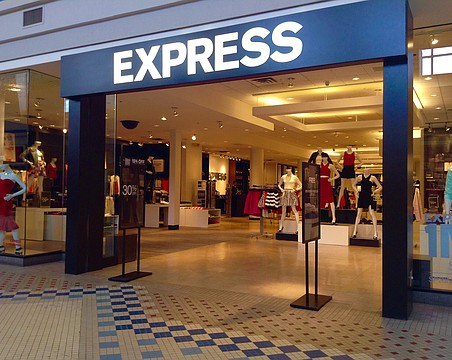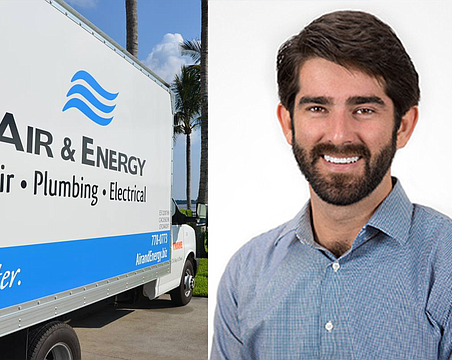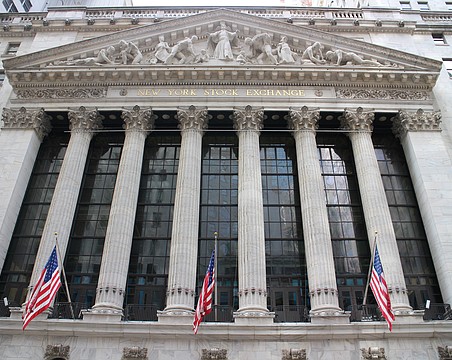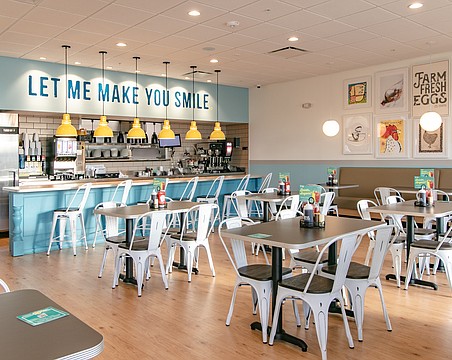Fast Start
Building the asset base of a new community bank while sustaining profitability is easier said than done.
By Francis X. Gilpin
Associate Editor
There's something else besides sunshine that Florida has in abundance: banks.
Out-of-state financial institutions are scooping up local banks every month. Witness the purchases of three Pinellas County holding companies - Peoples Florida Banking Corp. in Palm Harbor, Republic Bancshares Inc. in St. Petersburg and PCB Bancorp Inc. in Clearwater - during just the last quarter of 2003.
Yet there are new community banks springing up all the time to replace the ones getting integrated into multistate financial services networks. State regulators have received 12 more applications in the past year to charter new banks or trust companies.
In this feverish climate, the pressure is on some of these newborns. If their owners are looking to cash out in five or 10 years, they have to create a market presence in a hurry. That means attractively pricing products and trying to make money at the same time.
It's not easy, judging from a GCBR analysis of the performance of state-chartered de novo banks established in our region over the last decade.
GCBR looked at the 25 banks chartered from Pasco to Collier counties since 1994 that have been in business for a minimum of three years. We gauged their asset and deposit growth from the close of the calendar year in which they opened until last Sept. 30. From that, GCBR came up with an annualized average yearly increase in assets and deposits for each institution.
Some banks, such as First Kensington in Spring Hill and Coast of Florida in Bradenton, both chartered in 2000, are off to very fast starts. First Kensington, a unit of Tampa-based Kensington Bancshares Inc., increased assets at an annualized rate of $78 million.
But the banks that lately have returned the most to their owners as a percentage of equity tended to grow slower.
First Home Bank, which opened in Seminole five years ago, returned almost 21% on equity for the first nine months of 2003. (Its holding company, First Home Bancorp Inc., is a Subchapter S corporation that receives more favorable tax treatment than some other peer institutions, potentially enhancing profitability.) First Home's assets, on the other hand, grew at an average of $11 million a year, toward the low end among the 25 banks.
"That has been our strategy," says Jeffory H. Forbes, president and chief executive at First Home. "We've concentrated on managed growth."
The $68-million-asset bank has only one office and no immediate plans to open another. "With all the technology today, having offices isn't as important as it used to be," says Forbes. "Along with growth come expenses."
First Home watches expenses carefully while providing a decent array of investment and credit products. For service, customers get drive-up teller service six days a week, though no Saturday lobby hours.
As of Sept. 30, First Home had lowered its efficiency ratio during the previous year and spent about 61 cents to bring in a dollar of interest income. That was in line with the other prepubescent banks at the top of GCBR's profitability list.
Forbes says First Home is one Pinellas bank that isn't looking for a suitor. The bank is here for the long haul, says Forbes.
The corporate structure chosen by a bank's founders can point the way to an exit strategy, according to Richard P. Hunt, chairman and chief executive of Kendrick Pierce & Co. Inc., a Tampa investment bank specializing in the financial services industry.
Solid-performing S corporations like First Home have less incentive to sell because their profits are only taxed once, on the personal-income returns of their shareholders. A traditional corporation is generally more apt to be offered for sale as soon as the board of directors realizes consistent profitability and expanding market share are attracting buyer interest.
Peoples Florida, which is not an S corporation, grew to $250 million in assets in fewer than eight years while posting impressive returns. Shortly after Chairman, President and Chief Executive David Dunbar was named first runner-up to GCBR's 2003 banker of the year, Synovus Financial Corp. bought Peoples Florida in October for around $72 million.
The banks that achieve the elusive twin goals of growth and profitability have one thing in common. "It all comes down to management," says Hunt. "The best ones have great management."
Since World War II, the history of Florida banking has been an unbroken chain of five-year cycles, says Hunt. A flurry of bank incorporations followed by a frenzy of bank acquisitions.
Right now, the state is about midway through another acquisition phase, he says. The cycle has another year or two left. "There are still some good shops out there," says Hunt.
That means well-run banks chartered anywhere from four to six years ago are approaching what Hunt calls "the top of their premium cycle."
Five years ago, 11 banks swung open their doors on the Gulf Coast. The year 1999 was the region's busiest for new state charters in the last decade. Besides First Home, the only other double-digit ROE banks last year from the Class of '99 were First Community Bank of Southwest Florida (15.2%) in Fort Myers and First Florida Bank (12.6%) in Naples.
Although the two banks have only a handful of offices between them, it should be noted that neither is an S corporation.
State-chartered Gulf Coast banks
Open at least three years but fewer than 10 (dollars in thousands)
YearAvg. yearlyAvg. yearly2003 return2003 return
NameCityopenasset growthdeposit growthon assetson equity
First Home BankSeminole1999$11,389$9,4961.89%20.71%
Peoples BankPalm Harbor1996$32,643$25,3101.35%19.18%
Riverside Bank of the Gulf CoastCape Coral1997$41,989$35,3041.34%17.11%
First Community Bank of Southwest FloridaFort Myers1999$24,190$22,1601.21%15.17%
Platinum BankBrandon1997$29,790$27,5951.06%13.75%
First Florida BankVenice1999$38,555$36,0301.05%12.61%
Premier Community BankVenice1996$17,237$12,7570.63%9.41%
First Kensington BankSpring Hill2000$78,263$68,4310.74%8.80%
Bay Cities BankTampa1999$34,010$28,9500.72%8.74%
Heritage Bank of FloridaLutz1999$19,049$18,0940.71%8.64%
Hillsboro BankPlant City1998$8,544$8,0911.11%8.03%
Cornerstone Community BankSt. Petersburg1999$25,919$24,1350.89%7.91%
Horizon BankBradenton1999$20,578$20,0070.45%6.68%
Bank of NaplesNaples2000$17,361$17,4140.60%6.47%
Community Bank of ManateeBradenton1995$15,764$14,0770.43%6.34%
First Citrus BankTampa1999$21,317$18,7630.51%5.57%
Landmark Bank of FloridaSarasota2000$29,660$26,2690.51%5.49%
Signature BankSt. Petersburg1999$23,739$21,7860.51%4.98%
Bank of CommerceSarasota2000$43,126$40,0820.49%4.70%
People's Community Bank of the West CoastSarasota1999$24,336$23,1050.39%4.69%
Old Florida BankFort Myers1998$29,571$24,4910.51%4.28%
Century Bank of FloridaTampa2000$12,874$8,9460.64%3.94%
Premier Community Bank of Southwest FloridaFort Myers2000$18,416$16,5930.28%2.82%
United Bank of the Gulf CoastSarasota1999$21,667$17,1570.42%2.76%
Coast Bank of FloridaBradenton2000$61,619$54,9510.00%0.01%
Source: GCBR analysis of Federal Deposit Insurance Corp. data





